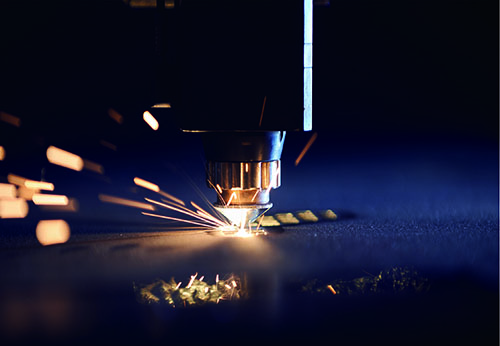How to properly maintain the main component of fiber laser cutting machine?
The main components of laser equipment are circuit system, transmission system, cooling system, light source system, and dust removal system. The main parts of Richang that need to be maintained are the cooling system (to ensure the constant temperature effect), the dust removal system (to ensure the dust removal effect), the optical path system (to ensure the beam quality), and the transmission system (focus on ensuring normal operation).

Tools/Materials:
rag
lubricating oil
grease
Anhydrous acetone
Non-woven cotton swabs
Method/Step
1. Cooling system maintenance
The water inside the water cooler needs to be replaced regularly, and the general replacement frequency is one month. The water chiller is used as circulating water to cool down the laser and other parts of the equipment. Long-term use of water will reduce the water quality and easily form scale, which will block the waterway and reduce the water flow and reduce the cooling effect. Therefore, regular water replacement is treated as the primary problem. Choose distilled water as much as possible for water, or deionized water if there are no conditions. Various manufacturers have requirements for water quality, so remember to meet the requirements, otherwise long-term use of water that does not meet the standard will cause fouling inside the laser.
2. Maintenance of dust removal system
Long-term use of the fan will accumulate a lot of solid dust in the fan, make the fan generate a lot of noise, and it is not conducive to exhaust and deodorization. When the fan suction is insufficient and the smoke is not smooth, first turn off the power, remove the air inlet and outlet pipes on the fan, remove the dust inside, then turn the fan upside down, and pull the inner blades until they are clean , And then install the fan.
3. Optical system maintenance
In the process of cleaning the lens, the only purpose is to remove the contaminants of the lens, and not to cause further pollution and damage to the lens. In order to achieve this goal, people should often adopt relatively low-risk methods. First, use an air ball to blow off the floats on the surface of the element, especially the lens with tiny particles and floccules on the surface. This step is necessary. But do not use compressed air on the production line, because the air will contain oil and water droplets, which will deepen the pollution of the lens. The second step applies acetone to lightly clean the lens. This grade of acetone is almost anhydrous, which reduces the possibility of lens contamination. The cotton ball must be dipped in acetone and the lens must be cleaned under light and moved in a circular motion. Once the cotton swab is dirty, it must be replaced. The cleaning should be done at one time to avoid the formation of crenellations. (If the lens has two coated surfaces, such as a lens, each surface needs to be cleaned in this way. The first surface needs to be placed on a layer of clean lens paper for protection.)
4. Drive system maintenance
In a fibre laser cutting machine, the transmission system is equivalent to a person's hands and feet. The transmission system directly affects the normal operation and service life of the equipment. The laser cutting machine will produce smoke and dust during the long-term cutting process. The fine smoke and dust will enter the equipment through the dust cover and adhere to the rail rack. Long-term accumulation will increase the rail teeth. The wear of the rack, the rack guide is originally a relatively precise accessory, and it will cause damage to the slider and the gear after a long time. Therefore, the guide rail rack should be cleaned regularly. After cleaning the dust attached to the guide rail rack, grease the rack and lubricate the guide rail with lubricating oil.
Precautions
The replacement of circulating water must ensure that the water quality can meet the requirements.
When wiping the protective lens and focusing lens, be careful not to scratch the lens, otherwise you can only replace the lens.